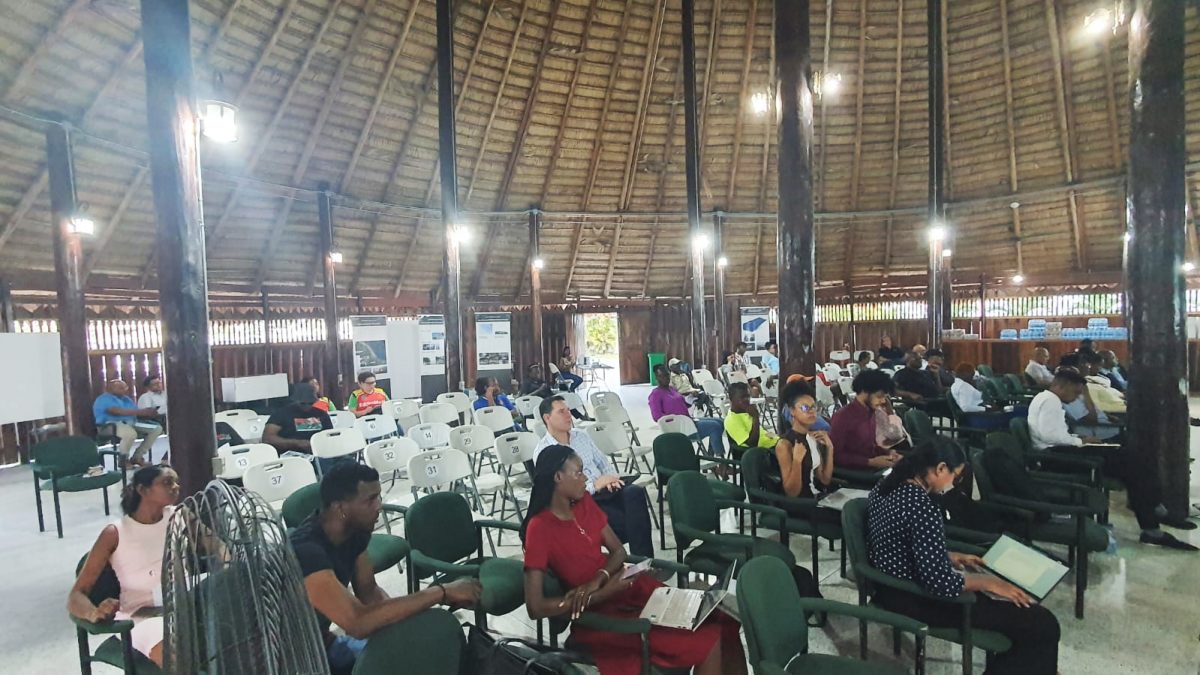Concerns over the effects of an oil spill in the Stabroek Block on marine life, especially fish, on Wednesday dominated ExxonMobil’s public meeting in Georgetown.
With representatives from the Opposi-tion present, along with former Mayor of Georgetown, Hamilton Green, activist, Gerald Pereira, walked out of the meeting after giving the company an earful on what he believed was their hypocrisy and plundering of the resources of this country.
Former PNCR minister, Simona Broomes, quizzed company officials on the effects of works offshore on the fishing industry here. The company said that it was working with the local fisheries department to assess, from baseline studies, whether its work had any effect on the sector. Projects Manager, Anthony Jackson, said that to date there was no concrete evidence to link offshore works and the reduction in fish catches.
Green expressed concern about the company’s ability to prevent an oil spill and was assured that while the company cannot be definite in saying a spill would not occur, it knows that it will use all its resources to prevent that from happening, and in the unlikely event it does happen, ensure it was cleaned in the swiftest time.
Citizen Colin Westmoreland, asked if the company knew what the cumulative effects of its projects were and was told that each project is assessed differently.
Another citizen enquired why if the company was so sure that it would not leave Guyana, in the event of a spill, they should “put your money where your month is” and a give Parent/Company Guarantee.
Meanwhile, Perreira, who also has a party – Organisation for the Victory of the People, – did not hold back in letting the company know that he felt that they were not sincere in saying they have Guyana’s best interest at heart, since he believed their only aim was profits. He said he does not welcome ExxonMobil here and believes the company should leave.
What would be the sixth of ExxonMobil’s projects in the Stabroek Block to date, the development covers the Whiptail, Pinktail and Tilapia discoveries. When the EPA had in January of this year announced that the company had applied for authorization for the project, it made clear that they would have to produce an EIA, given that it could significantly affect the environment. Against this background, the EPA had issued a 28-day notice to the public to submit questions and matters which they would like to be answered or considered in the EIA. The Whiptail project summary could be found on the agency’s website. A synopsis of the project states that it will be implemented in multiple stages which will include drilling and completions, mobilization and installation of subsea equipment, umbilicals, risers and flowlines, installation of a FPSO facility, production operations, and decommissioning.
According to the EPA, the proposed project will be undertaken in the marine offshore environment and would require land-based activities for support at marine shore bases and thus there could be possible environmental effects. “As a result of the intended developmental activities, possible effects to the environment may include impacts on marine water quality, air quality, marine fauna, and socio-economic resources, among others.
ExxonMobil has held public discussions on the project and had informed that it would again use the company, Environmental Resources Management (ERM), to undertake the impact study. With few local participants at the Georgetown scoping session held in February of this year, Project Manager (Guyana) Jackson had urged that the public send questions about concerns that they have about the Whiptail project to the EPA, so as to help guide the EIA process and ensure that proper analyses and mitigation measures are included.
The Whiptail 1 and Whiptail 2 discoveries were announced in July of 2021. The company had stated that Whiptail-1 well encountered 246 feet (75 meters) of net pay in high-quality oil-bearing sandstone reservoirs and was drilled in 5,889 feet (1,795 meters) of water. Relating to the Whiptail-2 well, ExxonMobil said it encountered 167 feet (51 meters) of net pay in high-quality oil-bearing sandstone reservoirs. Whiptail-2 was drilled in 6,217 feet (1,895 meters) of water. Guyana’s Stabroek block is 6.6 million acres (26,800 square kilometers). ExxonMobil affiliate, Esso Exploration and Production Guyana Limited, is the operator and holds 45% interest in the block. Hess Guyana Exploration Ltd. holds 30% interest, and CNOOC Petroleum Guyana Limited holds 25% interest.
ExxonMobil already has five approved projects: Liza-1, Liza-2, Payara, Yellowtail and Uaru. Two platforms are producing oil and a third is set to begin doing so by the end of this year.






